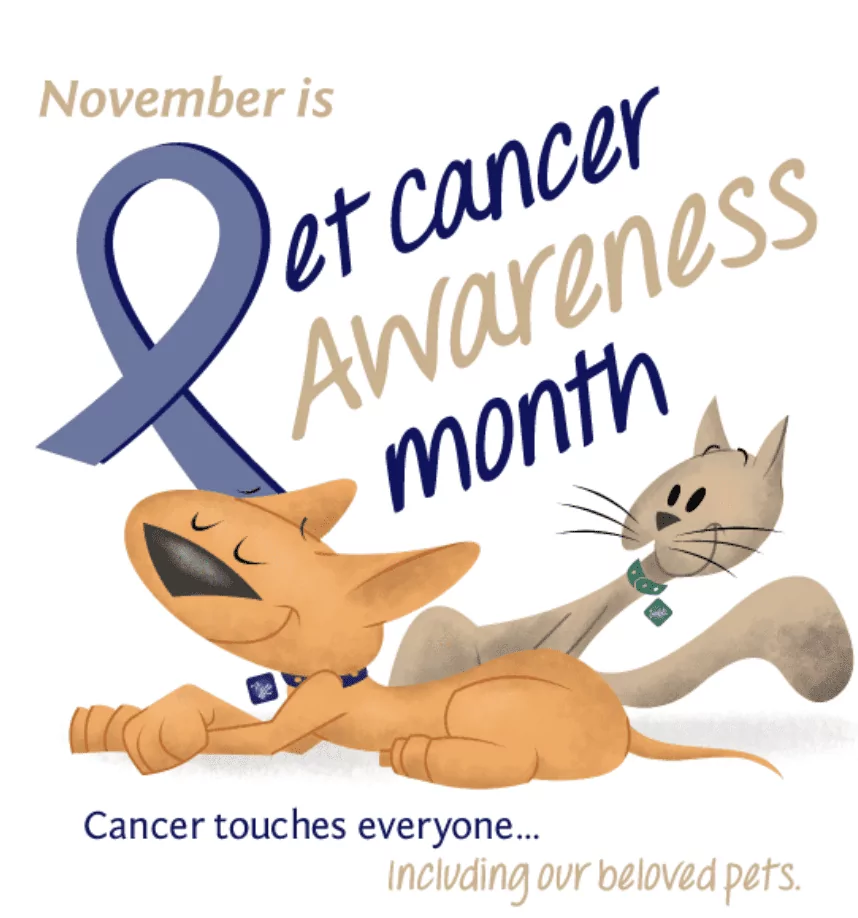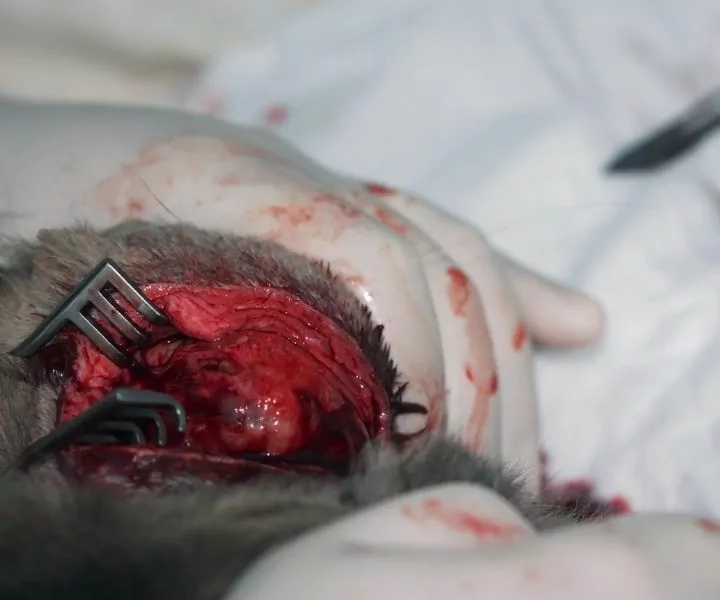Pet Cancer Awareness Month Figures
During an event at Pet Cancer Awareness Month, it was estimated that every 4th dog and every 5th cat will eventually develop some form of cancer during its lifetime. Cancers found in dogs and cats are very similar to the ones in humans and thorough research is of great benefit both for animals and people.
A pet diagnosed with cancer isn’t necessarily a death sentence, as modern veterinary medicine has certain ways of managing the disease. November is pet cancer awareness month and serves as a reminder that this silent, number one killer in pets is something we should take seriously and raise awareness about the symptoms, early diagnosis, and successful therapy protocols for the patients.

For this reason, highlighting canine cancer awareness and other pet cancer awareness is crucial!
Awareness of the importance of quality time with your four-legged friends during National Pet Cancer Awareness Month makes it a good opportunity to learn more about the many ways your pets can help you live longer and healthier lives.

The History of National Pet Cancer Awareness Month
The campaign was initiated back in 2005 by the Animal Cancer Foundation and by Nationwide in order to raise awareness, and possibly funds, meant for research and treatment.
The concerns were increasing because the escalating prevalence of cancer in pets was noted on yearly basis. November was chosen as the month when the campaign takes its strongest swing about this important issue, with a tendency to get pet owners, vet professionals, scientists, professors, and donators involved, to mutually contribute to building a happier world for our beloved pets.
Cancer Types in Pets and Symptoms
Skin cancer or MSN (Malignant Skin Neoplasia) is the most common type of cancer found in dogs and cats, with Lymphoma being the second most prevalent type.

Cancer cells can appear in any part of the body and every body system. Veterinarians deal mostly with cancers on the spleen, bones and joints, liver, bladder, oral cavity, lungs, thoracic cavity, and brain.
Except when there are evident lumps, bumps, and other changes on the skin, hidden internal cancers can be sometimes hard to diagnose. Usually, during the early stages, there are little to no clinical signs. This is the biggest problem because cancer is a lot easier to treat during the early stages of the disease.
Once cancer develops, every owner should look out for signs such as unexplainable weight loss, anorexia, lethargy, bleeding from body openings, persistent vomiting and diarrhea, enlarged lymph nodes, and strong odors arousing from the pet. What you, as an owner, need to do is take the pet to your local vet to be thoroughly examined. Never postpone making an appointment because time is crucial regarding cancer, especially in older pets.
Getting Involved in Pet Cancer Awareness Month
Make checking your pet’s body every month for unusual formations on the body a routine. Furthermore, use the month of November to make a veterinary appointment, even if the pet is perfectly healthy, where a professional will make sure there is no hidden disease.

Get proactive by making a donation to the Animal Cancer Foundation or post pictures and statuses on social media using #CurePetCancer. Nationwide is donating $5 for every #CurePetCancer hashtag to the Animal Cancer Foundation during the month of November.
Preventative Measures Against Pet Cancers
It’s really difficult to explain the roots of cancer so there are no specific preventative measures. What surely benefits your dog or cat is feeding them appropriate amounts of high-quality food and standardizes regular exercising routines.

Keep them away from pesticides, cigarette smoke, and other harmful chemicals, and keep short-haired breeds out of sunlight for longer periods of time.
Lastly, show your support by wearing a pet cancer awareness ribbon.
If you liked this article, read “Osteosarcoma in dogs and cats” on our blog.
